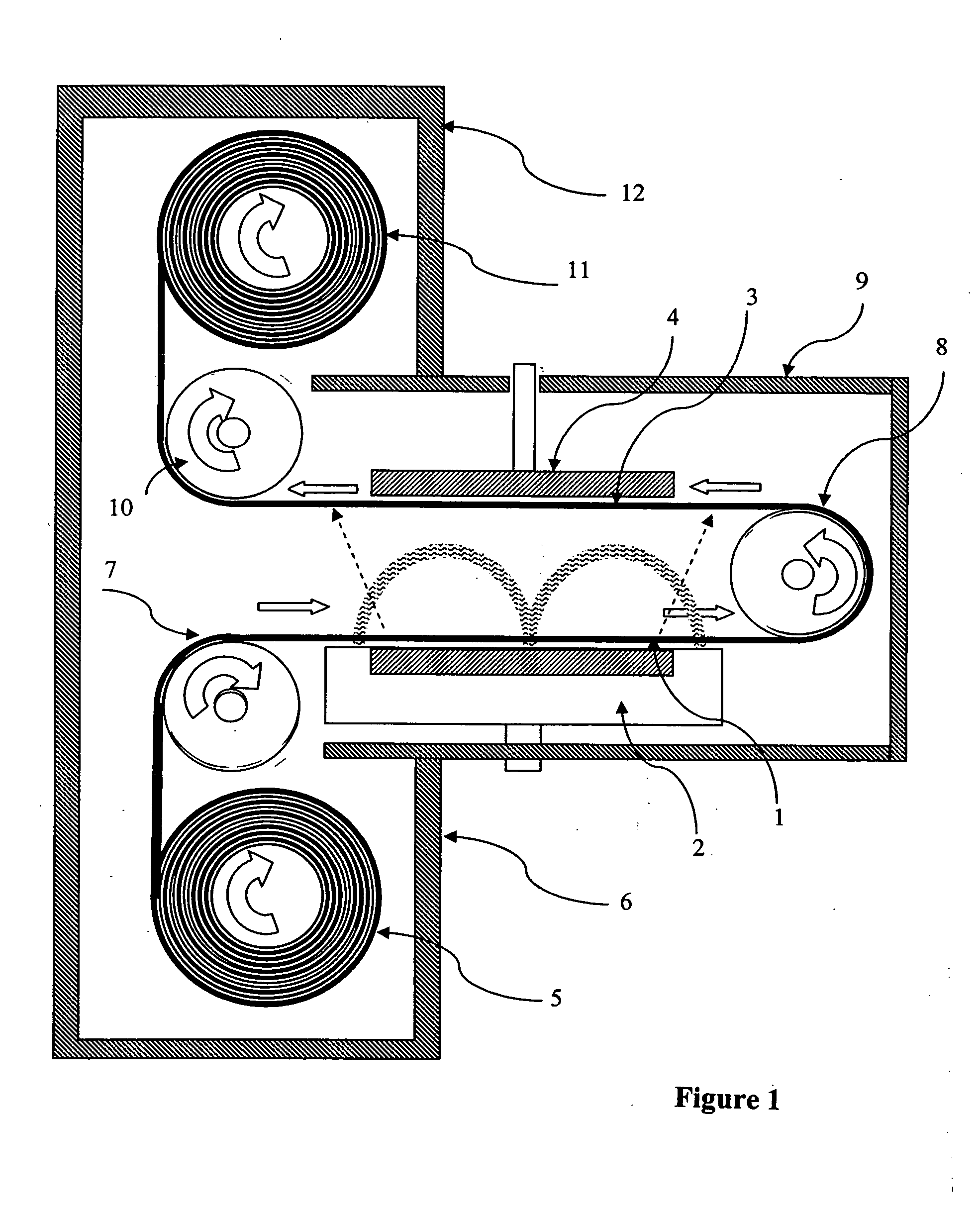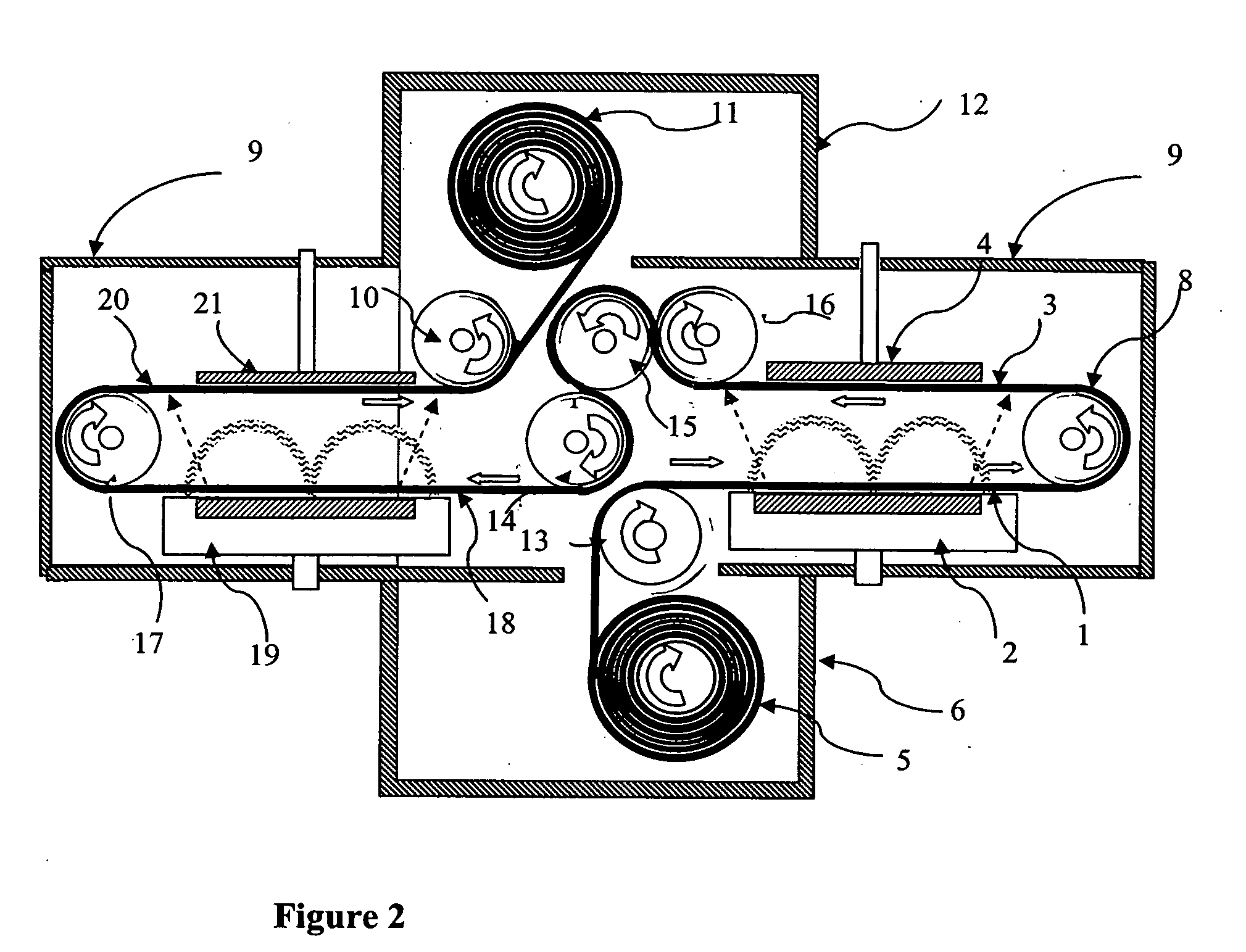Method and apparatus for trans-zone sputtering
- Summary
- Abstract
- Description
- Claims
- Application Information
AI Technical Summary
Benefits of technology
Problems solved by technology
Method used
Image
Examples
example 1
[0126]In the below example a 200-micrometer thick Teflon tape underwent surface engineering with the purpose to close superficial nano-pores in the typical diameter range of 1 nm to 4 nm. The engineering was conducted using a rectangular magnetron; the width of the sputter zone is 8″, and the sputtered and deposited layers are 10-nm thick. The power density is 10 W / cm (sup2), RF.
[0127]The distance between the tape and magnetron cathode is 2 mm.
[0128]Note: this 2-mm gap is designated for decreasing the heat exchange between the tape and magnetron cathode; the exact width of the gap is not critical, and even occasional touching between tape and cathode will not result in damage.
[0129]The deposition time of 10 nm thick film is 0.5 second, the tape speed is 24 m / min. The step-wise procedure is as follows:[0130]1. Two tapes are installed in the chamber in accordance with FIG. 4.[0131]2. The chamber closed.[0132]3. The mechanical pumping line open.[0133]4. Pressure in chamber reached 0.1 ...
example 2
[0148]The copper tapes and polyimide tape are installed in geometry shown on FIG. 4, similarly to the Example 1. The magnetron cathode in the copper branch of the unit is coated with 3 micrometer thick insulating diamond-like coating. The distance between the copper tape and the cathode surface, as well as between polyimide tape and respective cathode surface is 2 mm. The tapes' speed is 8 m / min, sputtering and deposition time for any specific area on the tapes is 1.5 seconds.
[0149]Final thickness of the copper layer upon polyimide is 8 nm. The copper layer is deposited instantly after cleaning of the polyimide substrate by ion sputtering and possesses high adhesion to polyimide and uniformity. Typically in the case of fast moving tape, the variation in uniformity will be less than 0.1% within 1 inch. Uniformity of composition and thickness is much better than plus / minus 1% within 1 m of length.
[0150]With foil, 20-40 microns, and you have a couple of centimeters it's about 10-50 m l...
PUM
| Property | Measurement | Unit |
|---|---|---|
| Angle | aaaaa | aaaaa |
| Angle | aaaaa | aaaaa |
| Angle | aaaaa | aaaaa |
Abstract
Description
Claims
Application Information
 Login to View More
Login to View More - Generate Ideas
- Intellectual Property
- Life Sciences
- Materials
- Tech Scout
- Unparalleled Data Quality
- Higher Quality Content
- 60% Fewer Hallucinations
Browse by: Latest US Patents, China's latest patents, Technical Efficacy Thesaurus, Application Domain, Technology Topic, Popular Technical Reports.
© 2025 PatSnap. All rights reserved.Legal|Privacy policy|Modern Slavery Act Transparency Statement|Sitemap|About US| Contact US: help@patsnap.com



